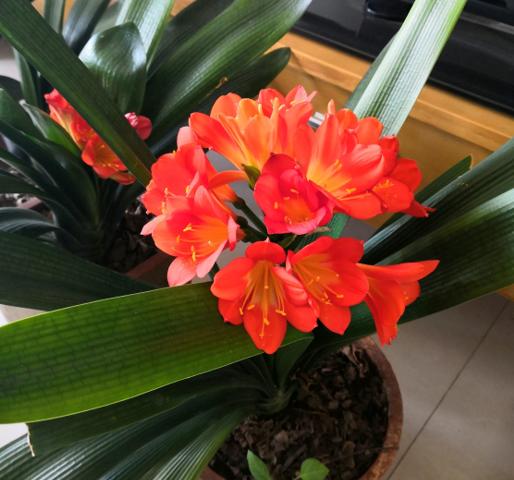
Green veins but yellow leaves: If your plant’s leaves have green veins but are yellow elsewhere, it is likely lacking in micronutrients, especially iron. This could be due to alkaline water or soil that prevents the absorption of iron. If you have not replaced the soil for a long time, this could also be a factor. To solve this, spray a solution of chelated iron diluted 1:1000 onto the leaves every seven days for about a month. If the soil is alkaline, add an acidic substance such as vinegar or wood vinegar to your watering routine at a ratio of 1:1000 to ensure iron absorption.

Dark and deformed new leaves: If new leaves grow curly, dark, and deformed during the plant’s active growing season (like spring or autumn), it is likely due to thrips infestation. Thrips fly to the plant’s new shoots at night to feed on them, and then fly away during the day, making them difficult to detect. To combat this, spray insecticide at night when the thrips are active. If you cannot use chemicals in your home, try hanging yellow or blue sticky traps to attract and trap the thrips.

Black spots on leaves: Circular brown or black spots on leaves indicate leaf spot disease. This is caused by fungi in the soil or poor ventilation, especially during continuous rainy weather. Preventative spraying of fungicide before rainy days is recommended. For infected plants, use fungicides like Mancozeb or Methylthiolate, spraying every three days for three times. Ensure good ventilation and avoid excessive watering.

White fuzz on leaves: White fuzz on the leaves of plants like roses indicates powdery mildew. This disease spreads easily in environments with poor ventilation and high humidity. Isolate infected plants immediately and improve ventilation. Spray fungicides like Nemestop or Propidium to treat the infection, spraying both the leaves and stems thoroughly every three days for three times.

Leaf burn: Brown or black edges on leaves, especially on plants like(osmanthus) or camellia, are caused by water stress. This happens when plants go through severe water deprivation, damaging their roots. Even after watering resumes, the damaged leaves will show burn marks. There is no cure for this, but new growth will be healthy if watering is maintained regularly. Ensure the soil is kept moist but not soggy, watering when the top half of the soil feels dry.

Black rot on leaves: Black rot starting from the edges of leaves is usually due to poor ventilation or overwatering, leading to root rot. Improve ventilation, move the plant to a sunnier spot, and add rooting hormone to your watering routine to encourage new root growth. Water sparingly, allowing the soil to dry out between waterings.

Slow growth and yellowing of lower leaves: If your plant’s lower leaves are yellowing and its new growth is sluggish or non-existent, it is likely starved of nutrients. This could be due to an overgrown root system in a pot that has not been replaced for years. In such cases, repotting is recommended. If the plant is newly acquired or has not been fertilized recently, add fertilizer, focusing on nitrogen-rich ones like Flower Power 10. Regular fertilization at least once a month is crucial for healthy plant growth.

Remember, these are just some of the common issues you may encounter while cultivating flowers. With time and experience, you will become more familiar with diagnosing and treating various plant problems. Always observe your plants carefully, noting any changes in their appearance or growth patterns. This will help you catch problems early and take appropriate action to keep your plants healthy and blooming beautifully.
